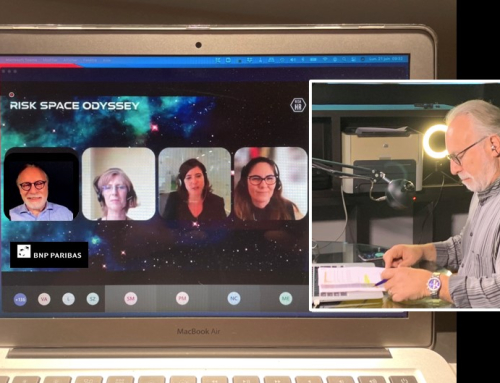Has your business organized virtual events over the past year? If so, you’ve certainly noticed that the new way of doing events no longer has anything to do with how we used to do events. Simply put, everything’s changed.
Since the pandemic’s beginning, the fact that events and meetings became virtual has multiplied the number of providers to such a point that everything now seems possible. Between event experts who need to understand complex technical solutions and technical experts who need to understand complex events, there is a range of vendors who claim to have the best solutions.
Many providers who worked in the old world have become creators of virtual meetings by proposing virtual team building activities, trainings, seminars or conferences. Applications such as Zoom and Teams have become as popular as Word or PowerPoint. Platforms allowing some form of active participation have emerged around the world. A study, obviously recent, listed more than 150 platforms ranging from the simple enhancement of a Zoom meeting to complete universes recreating convention centers with kiosks, conferences and networking areas. The rates for using these platforms vary from a few hundred dollars to more than one hundred thousand dollars per event.
In short, if they wanted to survive, companies whose business model depended on the presence of people in a room had to get on board real fast to offer virtual services. We can only applaud the ingenuity, the agility and the speed with which several suppliers met head-on the challenge linked to the disappearance of physical meetings. But what makes the success of a virtual event is very different from what makes the success of a face-to-face event. As it was during the conquest of the West, the idea of a ‘promised land’ brings its share of dreamers, charlatans and quack doctors. In this new Wild West, it may seem that just about anyone can do just about anything, much like those travelling salesmen who praised the merits of their snake oil that could cure everything, including rheumatism, toothaches and bladder problems. Some of these modern charlatans are particularly convincing and know how to make you believe in their cure. I learned that the hard way.
Twice in two months, suppliers assured us that they had the skills to do what they were asked to do but with such horrific results that we even had to cancel a 400 people event barely 90 minutes into it because the service provider was technically incapable of managing the event. You can organize fantastic activities and hire great speakers and facilitators, but if your service provider can’t give you sound or image when needed, or has such issues that your participants can’t even join the event, all that great planning goes down the drain.
It can be difficult to identify these hucksters because in this new world we lack familiar benchmarks. You often don’t even know what questions to ask to identify the best vendor or platform. When everything is new, how do you judge if the answers you’re given make sense? How do you know that what’s offered will meet your expectations? How do you assess the functionality of a platform when you have no idea how any of them really work? How do you compare prices when you can’t even tell the difference between an apple and an orange?
Having lived in the Wild West for more than a year now, we’ve learned some hard but practical lessons and we wanted to share some that may help you avoid the charlatans, understand how to better navigate in this new world and hopefully, sort the good suppliers from the bad ones.
Before choosing a provider
- Be as specific as possible when describing your needs in your calls for proposals. Present a clear outline of the event and highlight the important information. You want to give as much information as possible so that those providers who present proposals know what you really need and can quote accordingly.
- Ask for referrals and speak to clients and suppliers of prospective providers.
- Attend events organized by providers you consider hiring.
- Search the web to see what’s being said about possible providers and check government sites for their case history.
- Ask providers to tell you about problematic situations they experienced and how they mitigated the problem.
- Ask providers if they’re familiar with the different technologies you plan to use and if they are compatible with each other.
- Keep in mind that good providers rarely sell their services for cheap.
Once you’ve chosen a provider
- Have contracts that clearly state everyone’s responsibilities and attach financial agreements to guarantees of delivery quality.
- Because your event depends on the Internet and on the interaction of multiple technologies, make sure the service provider you chose has plans B, C and even D to overcome any breakdowns or technical problems. Yes, there will be some.
- Make sure your provider has and shares a production schedule that specifies activities and deliverables.
This list is certainly not exhaustive, but it may allow you to better anticipate this new way of doing events. With so many choices, platform possibilities, recording studios, broadcasting means and event planning agencies, don’t be tempted to become an expert. Finally, do not underestimate the human, material and financial resources needed. The design, production and delivery of a virtual event are often more complex and more expensive than you may think.
By Jocelyn Pinet
Vision D’Or co-founder and partner / Event leaders and facilitators since 1986






